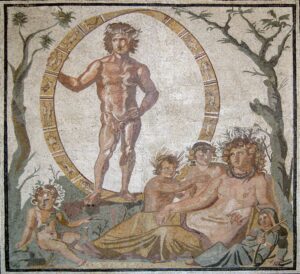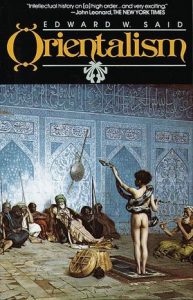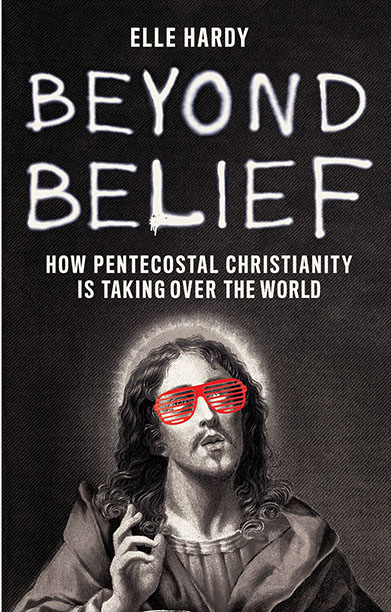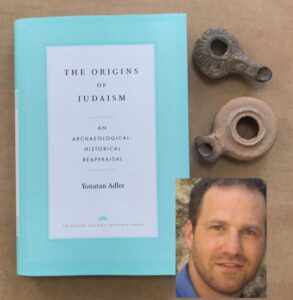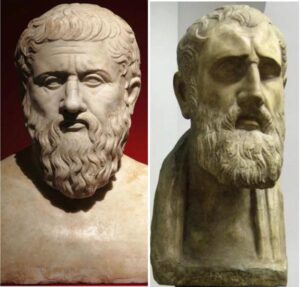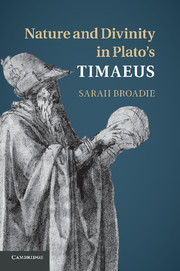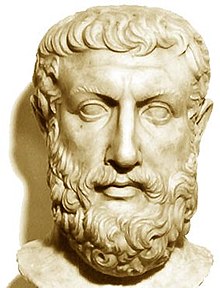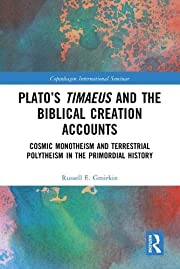
This post continues the series discussing Russell Gmirkin’s Plato’s Timaeus and the Biblical Creation Accounts.
After the expulsion of Adam and Eve from the garden we enter a new series of adventures that find their counterpart in the next book by Plato, Critias. Here we are led to understand that the land of Eden was only one part of the created world and that Cain, on being exiled from Eden itself, enters another land presumably inhabited by other peoples removed from the presence of the god Yahweh Elohim. We read names renowned for inventing the various crafts and arts of civilization and the building of the first cities. We read of “sons of gods” marrying mortal women and producing heroic warriors. We read of violence spiralling out of control and of Yahweh deciding to end it all by wiping out all humanity and every living thing in a cataclysmic flood. He is persuaded, however, to spare one family to start anew. Finally, new ethnic groups are once again scattered across the world from the tower of Babel.
We know the story but as long as we are sure that it was composed long before the classical era of Greece (from the fourth century BCE) and look only to possible antecedents in the Mesopotamian region then we will miss the remarkably distinct parallels with Greek myth. Yes, there is no doubt that the Flood story in Genesis is derived from an early Babylonian story, and the tower of Babel is obviously focused on Babylon, — no question there. But keep in mind that “Hellenistic” culture was initially about blending, uniting, the cultures of the east and west, of the lands once ruled by Persia with the values and ideas of their Greek conquerors.
This is Russell Gmirkin’s contribution to the way we view the Bible — to test the possibility that Genesis and its companion literature were written as late as the Hellenistic era:
The current chapter shifts the focus to Critias, Plato’s sequel to Timaeus. The use of Critias as a model for the antediluvian world in Genesis has not previously been proposed by biblical critics. While Timaeus was concerned with the origins of the kosmos, of life and death, and of human moral sensibilities and failings, Critias presented a tale set in earliest mythical times that laid out the devolution of ideal political institutions, established by the gods, into a spiral of ambition and violence divinely punished by cataclysmic earthquake and flood that ended the Age of Heroes and overflowed the mythical continent of Atlantis. (p. 199 — my highlighting in all quotations)
Genesis is an odd mix. It begins with a stately account of creation in six days — all in coherence with the scientific thought of the Hellenistic era — but then shifts to mythical tales of talking snakes and “sons of gods” marrying mortal women. In Gmirkin’s view, it is as if we are reading a work that “consciously mimic[s] Plato’s Timaeus (the scientific and theological narrative) and Critias (mythical narrative).”
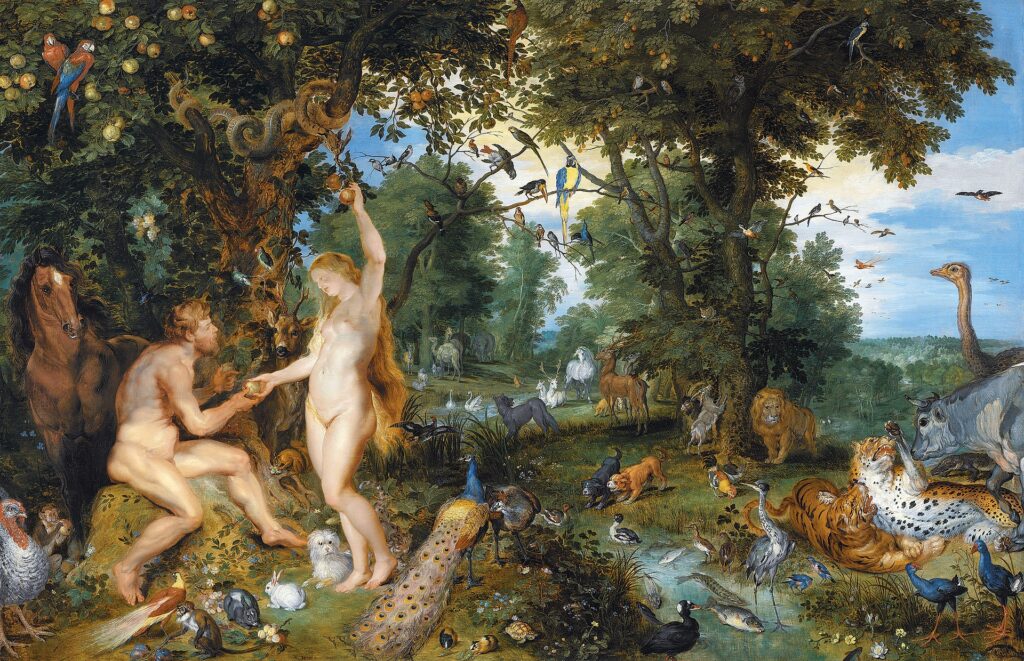
I had initially expected to post a discussion of the entire seventh chapter but instead have resolved to post a series of smaller units, each one covering one aspect of the primeval history from Cain to Babel. Instead of quoting Gmirkin and others he references, I have decided to cut to the chase and allow you to see for yourselves how episodes from Genesis compare with Greek literature. My quotations are selective. I have omitted details that do not find correspondence. For example, Plato’s account of Atlantis speaks of building a palace for Poseidon. Gmirkin remarks that in Genesis, since Yahweh Elohim converses with Adam and Eve in the Garden of Eden, it can be assumed that he has a temple or mansion of some kind there, too. But of course if that is what the Genesis author and his audience took for granted it is not mentioned. So I have omitted from my selections Plato’s description of the god’s palace.
Russell Gmirkin additionally discusses other options that have been proposed as models of the Garden of Eden: the royal parks of the kings of Assyria, temple gardens of Mesopotamia, and other Mesopotamian mythical stories such as Gllgamesh. He finds little strong comparison in any of those alternatives. (See the post following this one for some instances of what have ben considered “Garden of Eden” parallels in ancient Sumerian literature.) Why would a supply source for pagan temples be an inspiration for the Genesis author? Or why the hunting grounds of an Assyrian king?
Genesis 2-3 |
Plato |
Homer, Hesiod, Pindar |
| Then the Lord God formed a man from the dust of the ground (Gen 2:7) | [Athens] was founded first, when the goddess received your rootstock from Earth and Hephaestus (Timaeus 23e)
There lived on this hill a man who was one of the original earth-born men of the land. (Critias 113c) we’ve also heard from many about the kingship exercized by Kronos, And . . . that earlier men were born from the earth (Statesman, 269a-b) |
|
| Now the Lord God had planted a garden in the east, in Eden; and there he put the man he had formed.
The Lord God made all kinds of trees grow out of the ground—trees that were pleasing to the eye and good for food. . . . A river watering the garden flowed from Eden; from there it was separated into four headwaters. The name of the first is the Pishon; it winds through the entire land of Havilah, where there is gold. (The gold of that land is good; aromatic resin and onyx are also there.) The name of the second river is the Gihon; it winds through the entire land of Cush. The name of the third river is the Tigris; it runs along the east side of Ashur. And the fourth river is the Euphrates. . . . Adam and his wife were both naked, and they felt no shame. Now the serpent . . . said to the woman, . . . The woman said to the serpent . . . . . . the serpent said to the woman “. . . your eyes will be opened, and you will be like God, knowing good and evil. When the woman saw that the fruit of the tree was good for food and pleasing to the eye, and also desirable for gaining wisdom . . . * Yahweh Elohim . . . was walking in the garden in the cool of the day . . . (Gen 2:8-14, 25; 3:1-8) |
Poseidon, as a god, easily organized the central island [of Atlantis]. Once he had fetched up two underground springs — one warm, the other flowing cold from its source — and caused all kinds of food to grow in sufficient quantities from the soil . . . . the island by itself provided them with most of the necessities of life. . . They had everything, [precious stones and metals] that could be mined from the ground, and in fact in many parts of the island there was dug up from the ground something which is now no more than a name, although in those days it was an actual fact and was second in value only to gold — orichalc [which gleamed like fire]. . . . Everything aromatic the earth produces today in the way of roots or shoots or shrubs or gums exuded by flowers or fruits was produced and supported by the island then. . . . Any water which overflowed was channelled to the grove of Poseidon, where all the various species of trees grew to be beautiful and extraordinarily tall thanks to the fertility of the soil, . . . Streams descending from the mountains drained into it, and it made a complete circuit of the plain, . . . and then the water was allowed to discharge into the sea. (Critias 113e – 114e. 115a, 117b, 118d) Trees and flowers and fruit, grow in proportion; and again, the mountains contain stones likewise, whose smoothness, transparency, and beauty of colour are in the same proportion; it is from these that the little stones we value, sardian stones, jaspers, emeralds, and all such, are pieces; but there, every single one is like that, or even more beautiful still. . . . But the true earth is adorned with all these things, and with gold and silver also, and with the other things of that kind as well. For they are plainly visible, being many in number, large, and everywhere upon the earth. (Phaedo 110d-111c) . . . the parts of the world-order having everywhere been divided up by gods ruling over them; moreover divine spirits had divided living things between them, like herdsmen, by kind and by herd, each by himself providing independently for all the needs of those he tended, so that none of them was savage, nor did they eat each other, and there was no war or internal dissent at all. . . . But to return to what has been reported about a life for human beings without toil, the origin of the report is something like this. A god tended them, taking charge of them himself, . . . they had an abundance of fruits from trees and many other plants, not growing through cultivation but because the earth sent them up of its own accord. For the most part they would feed outdoors, naked and without bedding; for the blend of the seasons was without painful extremes, and they had soft beds from abundant grass that sprang from the earth. What I describe, then, Socrates, is the life of those who lived in the time Kronos . . . Well then, if, with so much leisure available to them, and so much possibility of their being able to get together in conversation not only with human beings but also with animals – . . . to do philosophy, talking both with animals and with each other, and inquiring from all kinds of creatures whether any one of them had some capacity of its own that enabled it to see better in some way than the rest with respect to the gathering together of wisdom, the judgement is easy, that those who lived then were far, far more fortunate than those who live now. (Statesman, 271c-272c) |
. . . the Elysian plain at the world’s end, . . . where living is made easiest for mankind, where no snow falls, no strong winds blow and there is never any rain, but day after day the West Wind’s tuneful breeze comes in from Ocean to refresh its folk. (Homer, Odyssey IV, 563-569)
The gods, who live on Mount Olympus, first Fashioned a golden race of mortal men; These lived in the reign of Kronos, king of heaven. And like the gods they lived with happy hearts untouched by work or sorrow. Vile old age never appeared, but always lively-limbed, far from all ills, they feasted happily. Death came to them as sleep, and all good things were theirs; ungrudgingly, the fertile land gave up her fruits unasked. Happy to be at peace, they lived with every want supplied, (Hesiod, Works and Days, 110-120) But with nights equal forever, with sun equal in their days, the good men have life without labor . . . . Beside the high gods they who had joy in keeping faith lead a life without tears. . . . . But they who endure thrice over in the world beyond to keep their souls from all sin have gone God’s way to the tower of Kronos; there winds sweep from the Ocean across the Island of the Blessed. Gold flowers to flame on land in the glory of trees; it is fed in the water, whence they bind bracelets to their arms and go chapleted . . . (Pindar, Olympian Ode 2)
|
* I have added, rightly or wrongly, to Russell Gmirkin’s notes of comparisons Plato’s suggestion that the impulse for conversation between humans and animals was “the getting of wisdom.” For another interpretation of Plato’s influence on the Genesis temptation narrative see The Temptation in the previous post.
(There is one other detail that I might develop later: Gmirkin explains certain contradictions in Genesis 1-2 as the consequence of different authors being responsible for different sections, so that the scientific portion of Genesis 1 had one author while the myth of Adam and Eve another. That may be so, but I also note that Plato himself is not consistent and while at one place he speaks of an idyllic age without need for technology and other time he describes technologies in that ideal world of the past. He didn’t seem to worry if he told a different version when a different purpose for the story was called for. Plato could also write both highly technical “scientific” discourses as well as dramatic and colourful myths within the one work.)
Gmirkin, Russell E. Plato’s Timaeus and the Biblical Creation Accounts: Cosmic Monotheism and Terrestrial Polytheism in the Primordial History. Abingdon, Oxon New York, NY: Routledge, 2022.
Plato. Timaeus and Critias. Translated by Robin Waterfield. OUP Oxford, 2008.
Plato. Phaedo. Translated by David Gallop. Clarendon Press, 1977.
Plato: Statesman. Translated by C. J. Rowe. First published 1995, Reprinted with corrections 2005. Warminster, England: Liverpool University Press, 1995.
Hesiod. Theogony ; Works and Days. Translated by Dorothea Wender. Harmondsworth : Penguin, 1973.
Homer. The Odyssey. Translated by E.V Rieu. Ringwood, Vic.: Penguin Books, 1946.
Pindar. The Odes Of Pindar. Translated by Richmond Lattimore. The University of Chicago Press, 1947.

